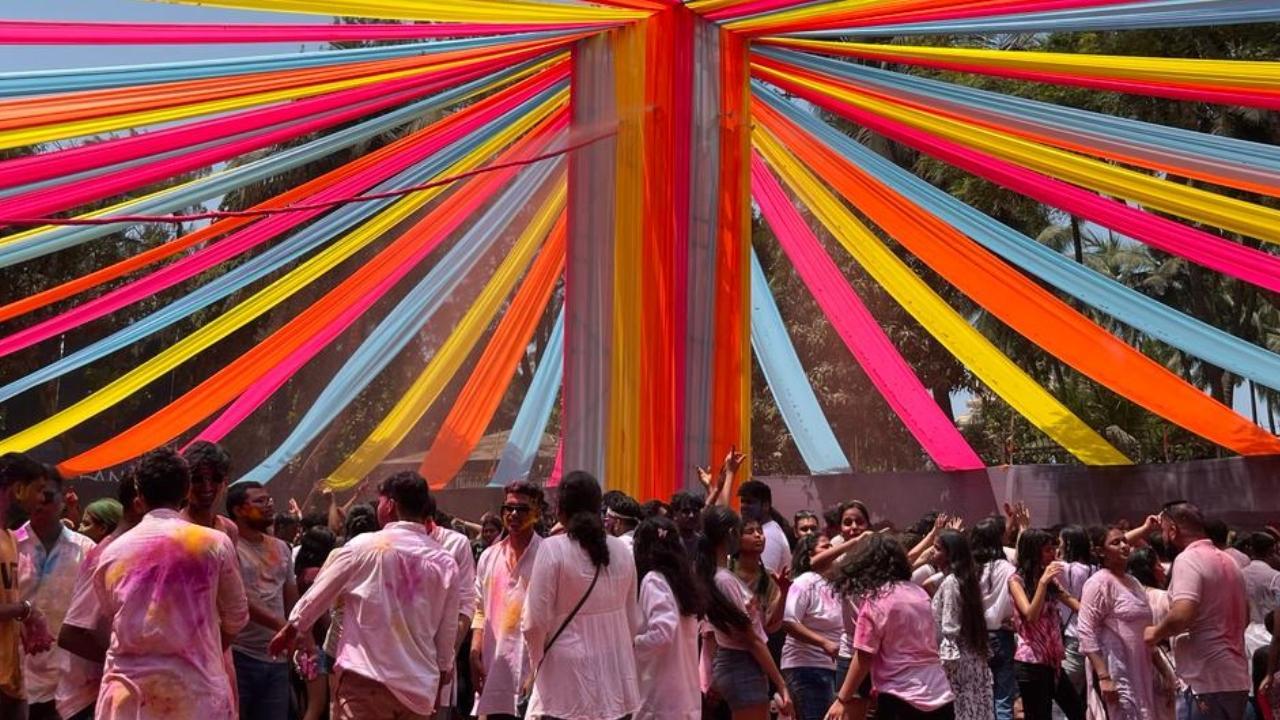Rangpanchami is part of the Holi festival celebrated on the fifth and the last day

People celebrating Holi in Mumbai. Pic/Atul Kamble
The Holi festival is celebrated for two to five days depending on the regional variations. As per Hindu calendar it is celebrated from Phalgun Pournima to Panchami every year. Rangpanchami (Rang meaning colours and panchami meaning fifth day) is part of the Holi festival celebrated on the fifth and the last day. Traditionally, Holi colours (gulal plus water) are played in the dark fortnight of the Hindu lunar month of Phalgun.
ADVERTISEMENT
Also Read: Holi 2024: Wishes and messages to share with family and friends on festival
The celebration of Holi festival differs from state to state. It has various names such as Hori, Dolyatra in north India, Shimga, Holi, Hutashani mahotsav and Holika Dahan in the states of Goa and Maharashtra, and Kamdahan in southern India. This festival is celebrated as Dolyatra in the state of Bengal. It is also called Vasantotsav or Vasantgamanotsav, that is, the festival celebrated to welcome the Vasant (spring) season.
Also Read: What is Shigmotsav festival and why do Goans celebrate it?
In some states, Dhoolivandan (Holi played with power colours) is celebrated on the second day of Holi festival, which is similar to Rangpanchami in some states. In Hindu tradition it is believed that during Rangpanchami vibrant colours are thrown in air to celebrate the festival is in the purpose to activate five elements of radiant manifest colours and to touch and feel the Deities who are attracted to the respective colours.
Also Read: Holi 2024: Looking for a getaway? Here's why you should pick from these options
However, the five day Holi festival is popular as festival of colours. Seeing the form of the Holi festival as prevalent today one realises that this festival is basically celebrated at a social level. Despite, generations have passed, a number of religious and cultural rites and rituals of Holi are still observed.
 Subscribe today by clicking the link and stay updated with the latest news!" Click here!
Subscribe today by clicking the link and stay updated with the latest news!" Click here!







